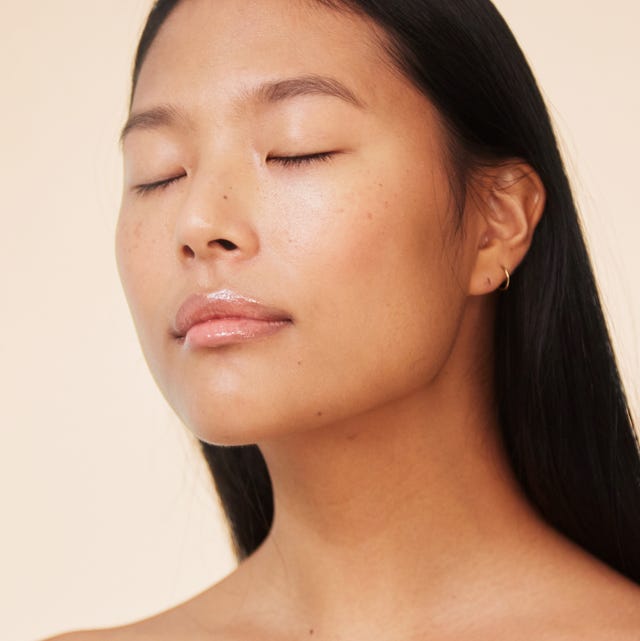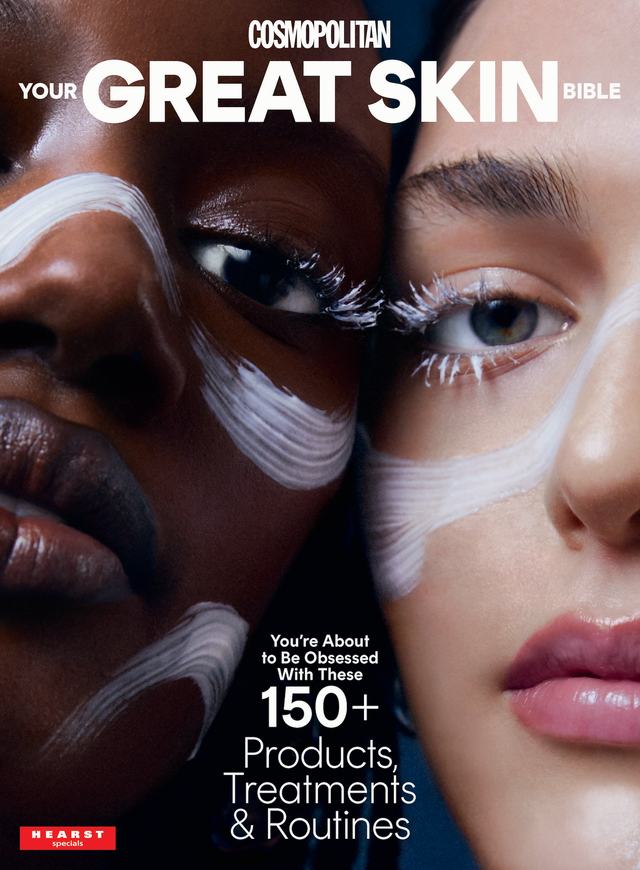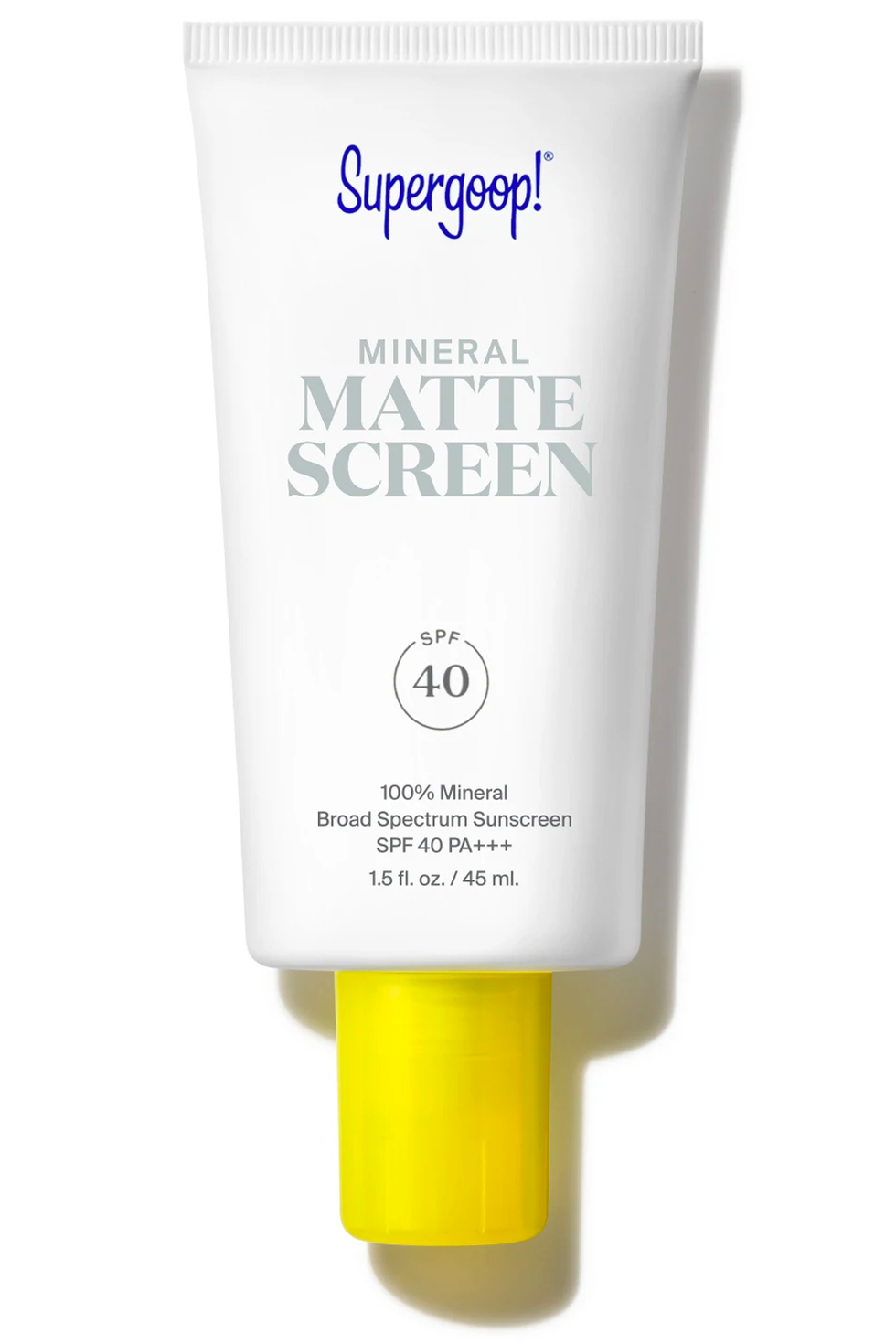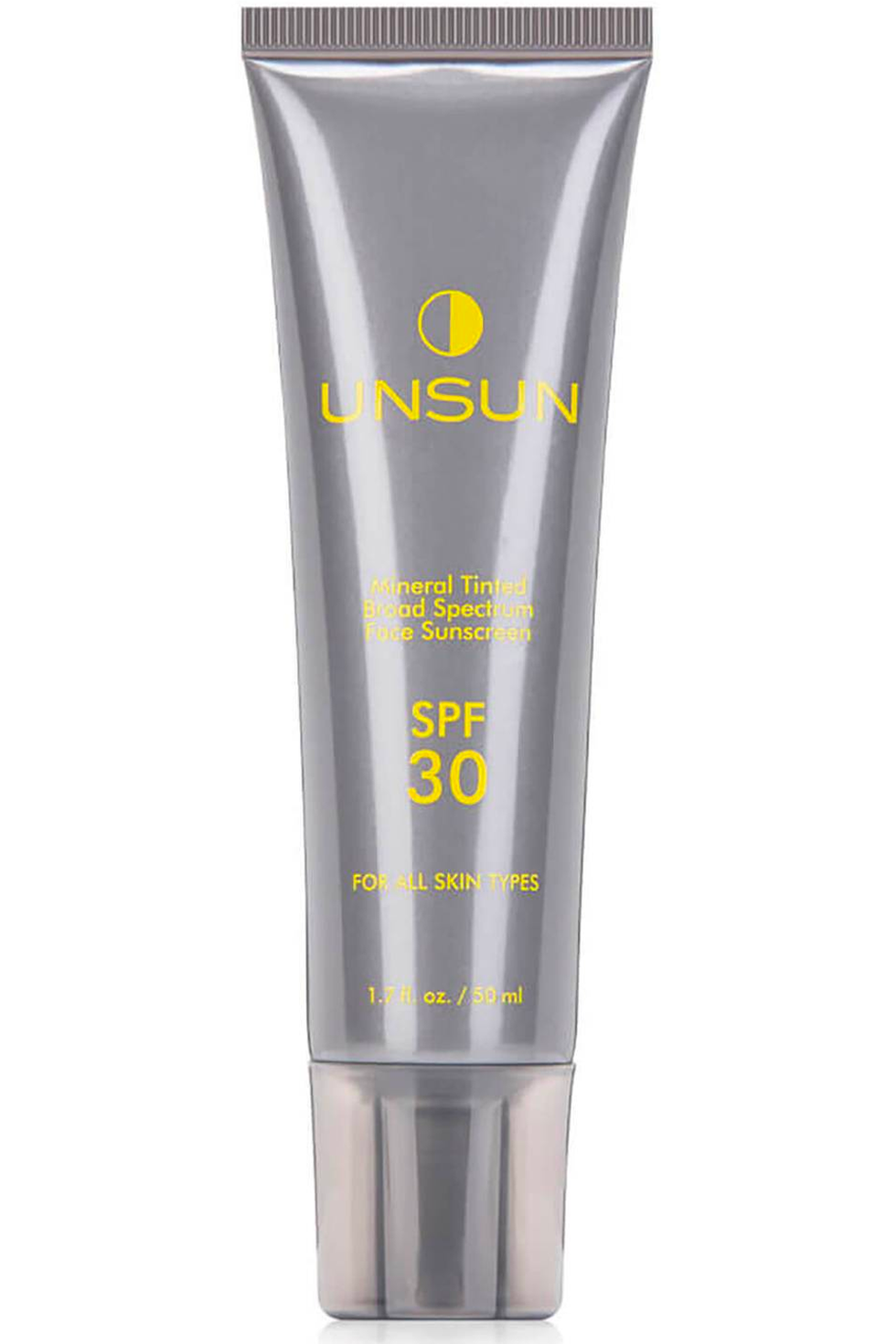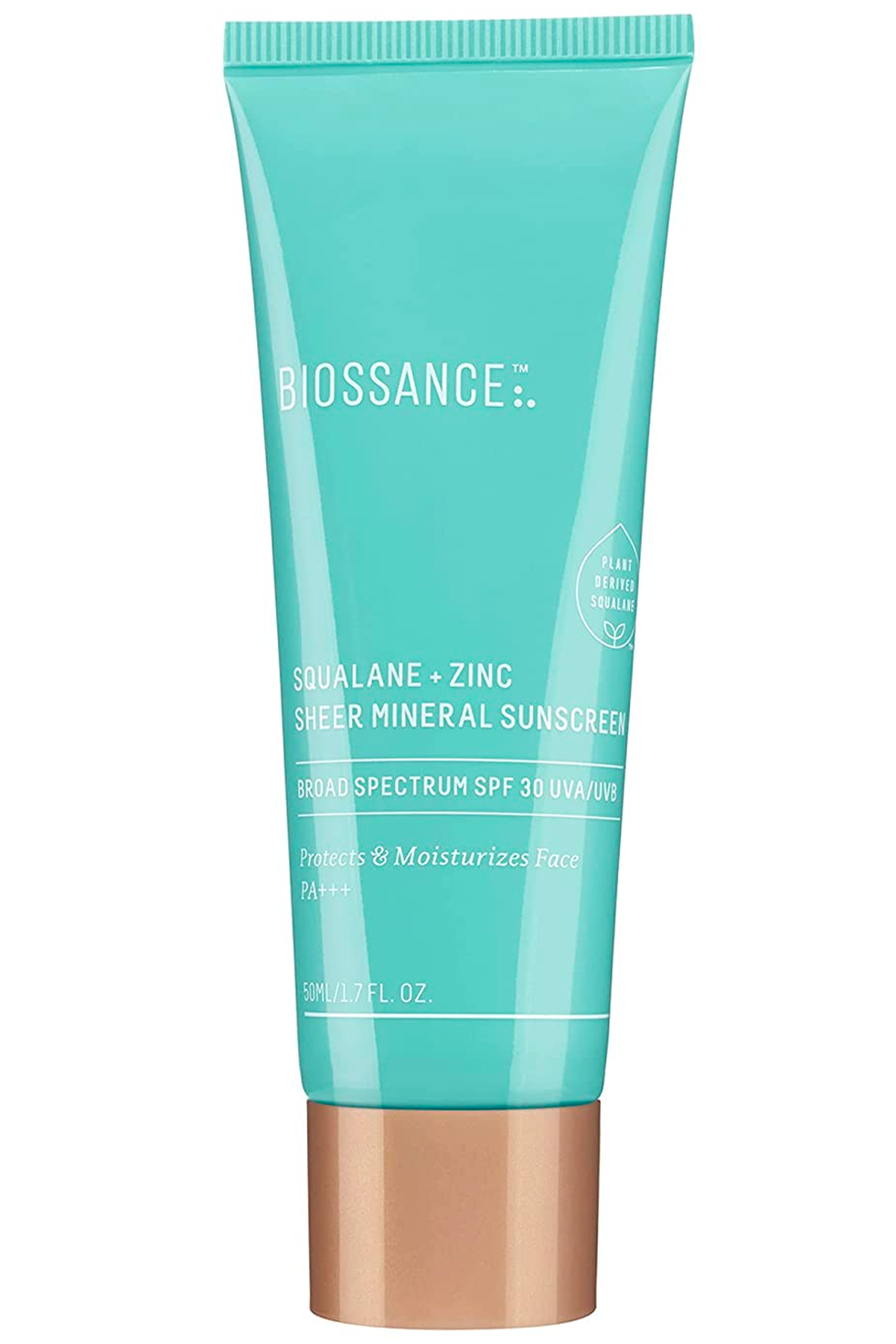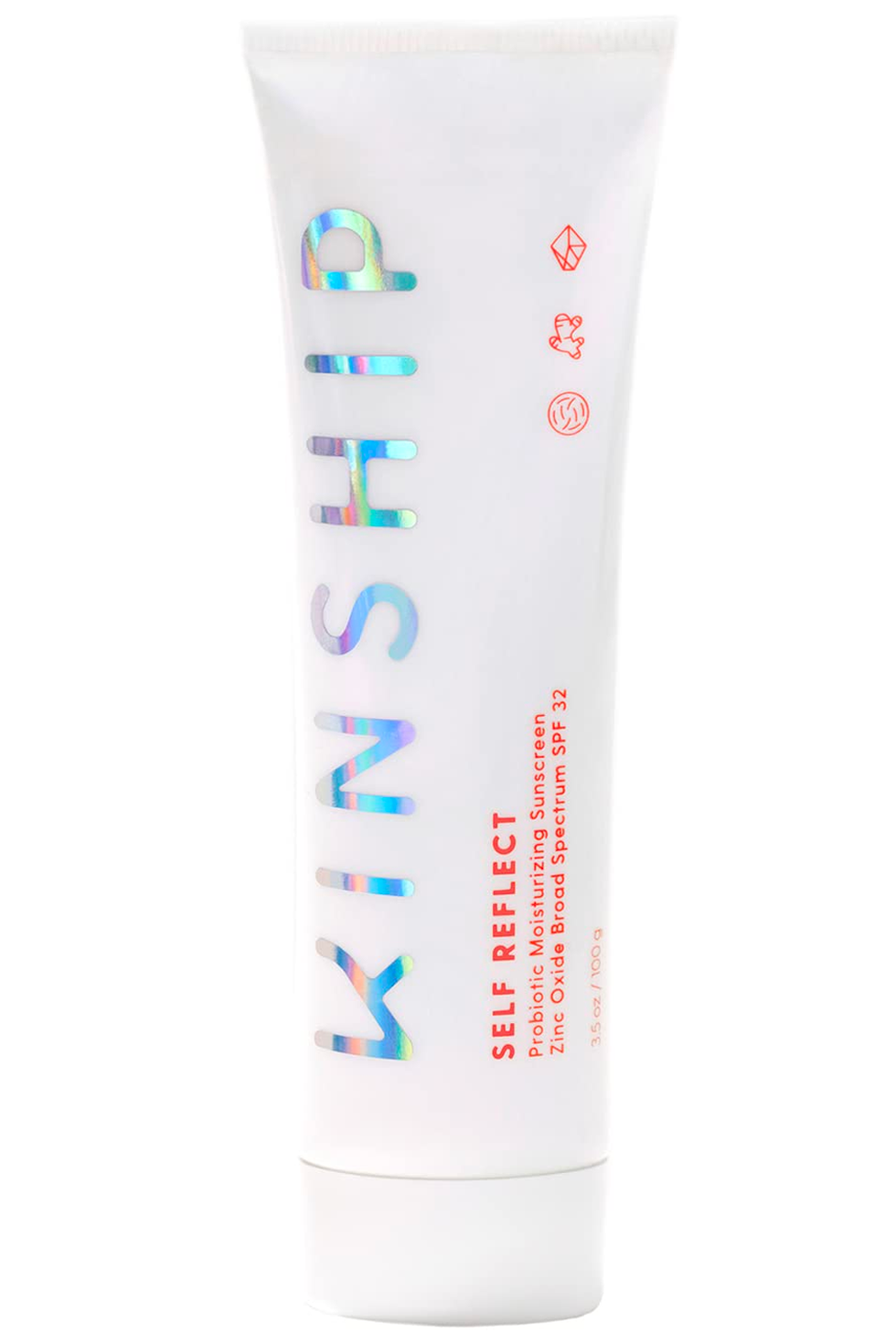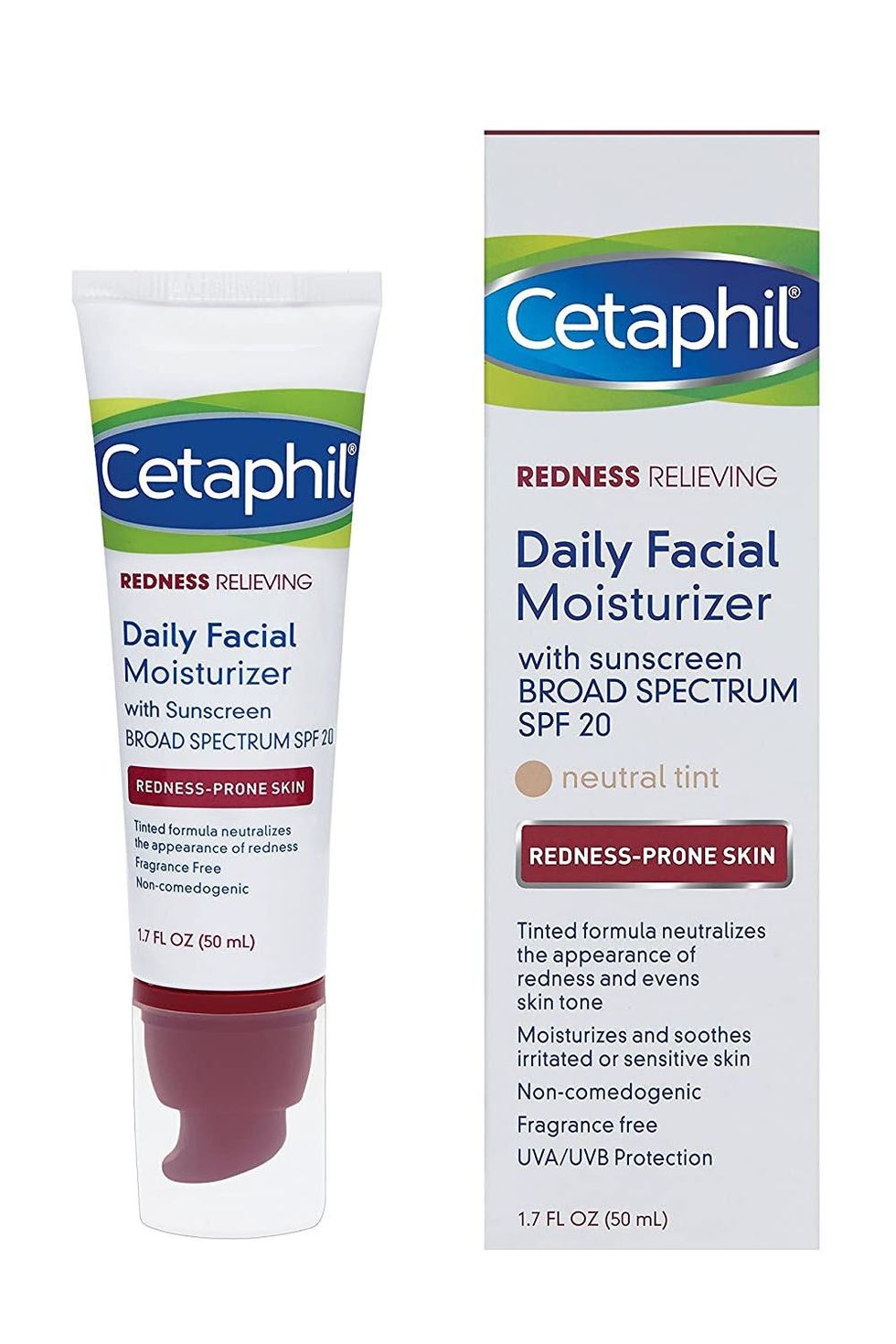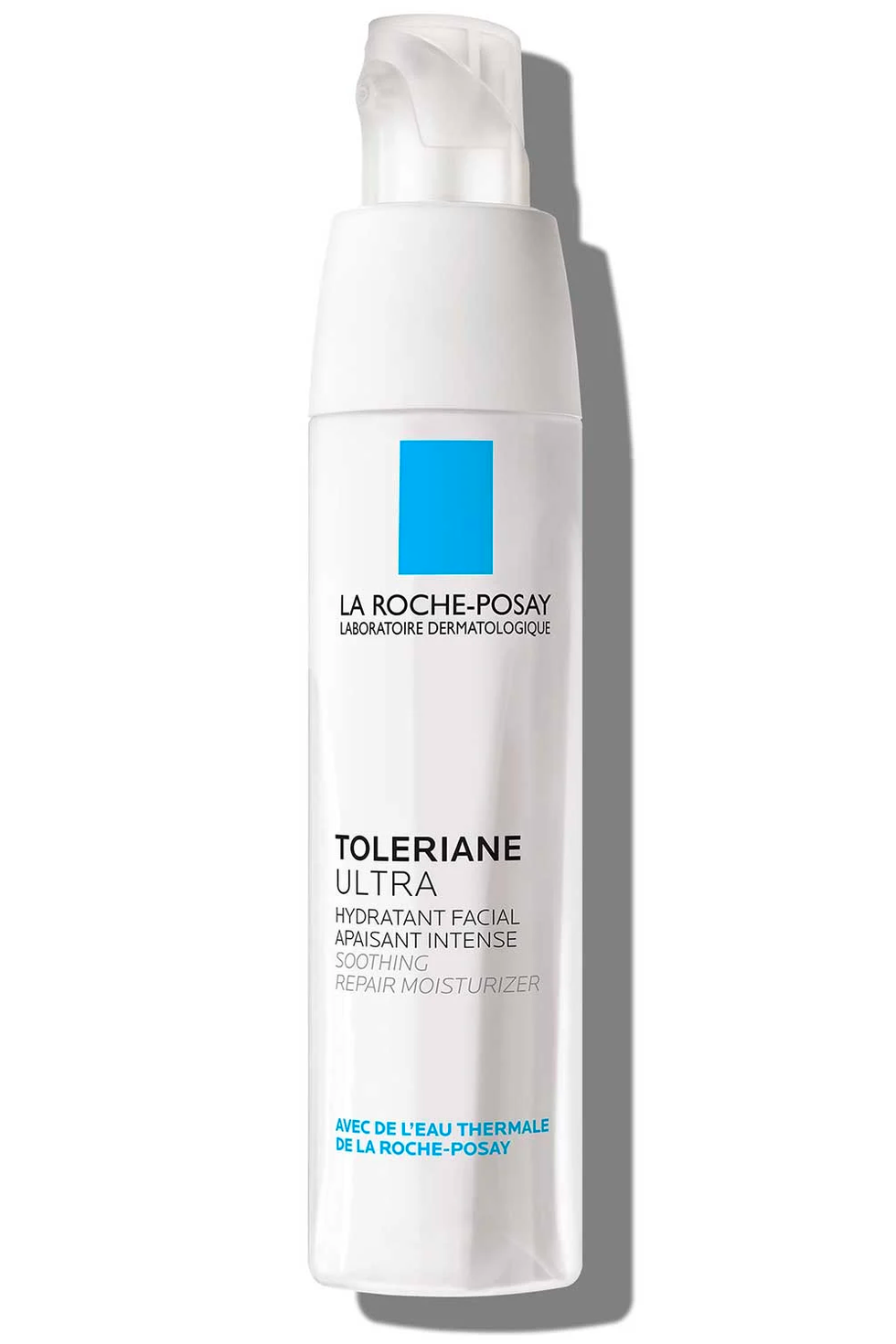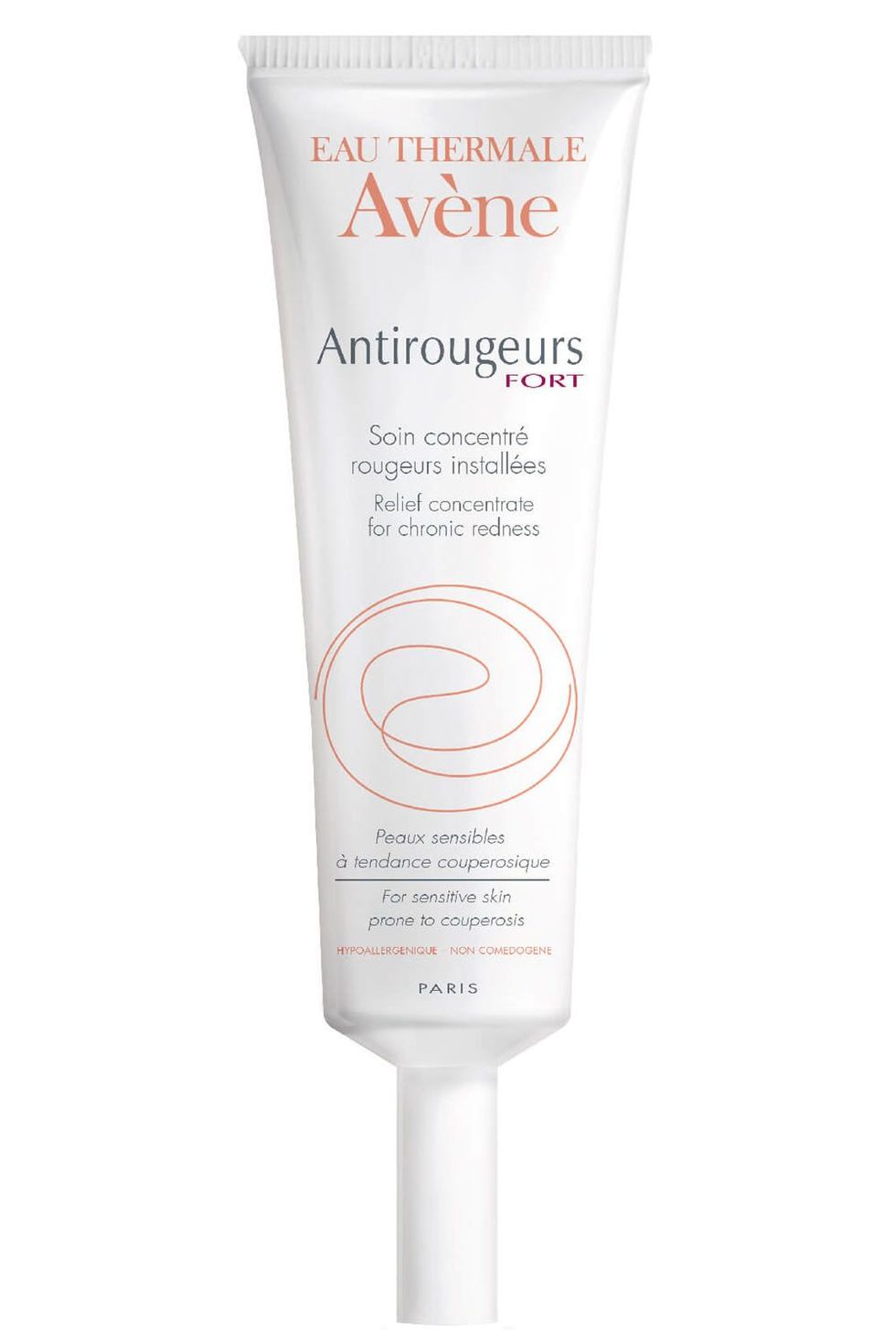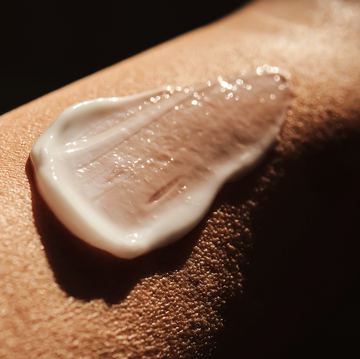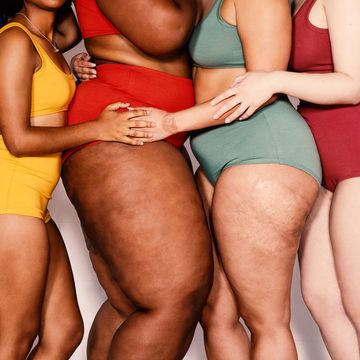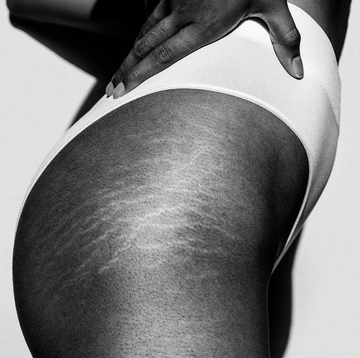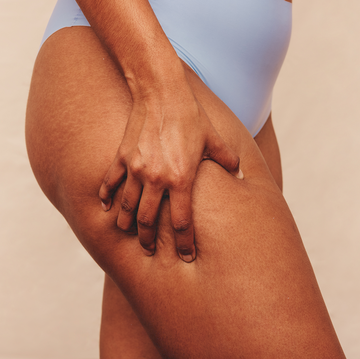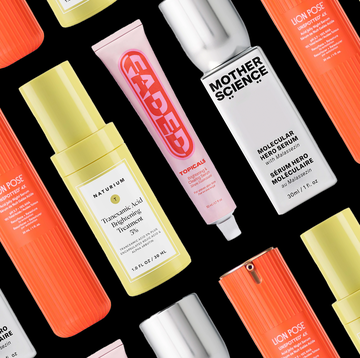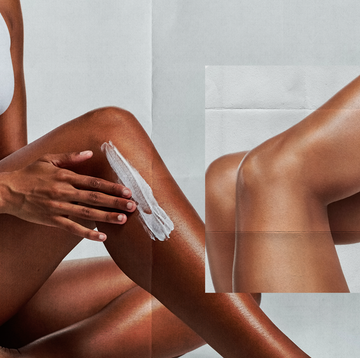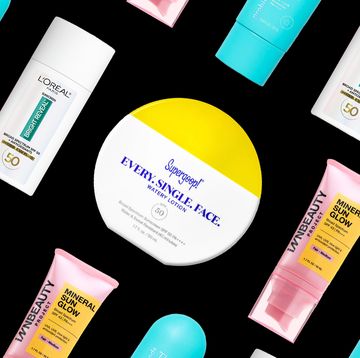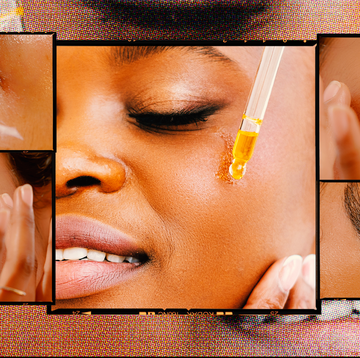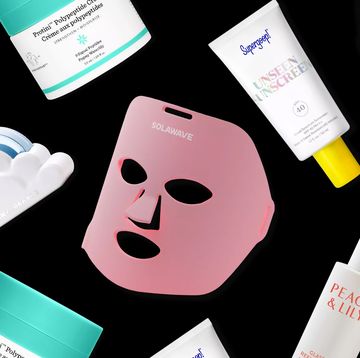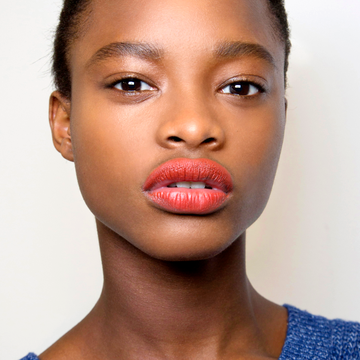If you regularly fall down a beauty TikTok hole like I do (see: ASMR skincare, makeup hacks, and pore-unclogging), then you’ve probably already stumbled upon the magical world of dermaplaning—i.e., the cosmetic treatment where a dermatologist or aesthetician gently exfoliates your face with a scalpel. Sounds intense, but it's actually painless, quick, and effective at removing dead skin cells and peach fuzz to leave your skin looking brighter and softer.
Of course, if you're new to dermaplaning, you've probably still got questions, like how it's different than dermabrasion, or whether or not you can just shave your face at home for the same results, or how much the treatment actually costs and how long it takes. Which is why we chatted with dermatologists Melissa Doft, MD, and Mona Gohara, MD, along with medical aesthetician Tamila Deveny to answer all your dermaplaning questions, below.
What is dermaplaning?
Dermaplaning is a non-invasive cosmetic treatment that involves scraping off dead skin cells and peach fuzz with a scalpel to leave your face brighter and smoother. “Dermaplaning is like a turbo-charged exfoliator,” says dermatologist Mona Gohara, MD, noting that it can remove up to two weeks of dead skin with results that last up to three weeks.
Is dermaplaning the same as shaving?
No, dermaplaning is not the same as shaving your face. Though they're very similar, dermaplaning delivers exfoliation along with hair removal (and is also performed by a licensed professional), while shaving really only removes peach fuzz and can be done at home, though Dr. Gohara doesn't recommend it: “Sharp blades and DIYs shouldn’t go together,” she says.
Still, if you’re just looking to get rid of some peach fuzz, and your skin isn’t at all sensitive, and you’re ok with ignoring the advice of a dermatologist, you can try carefully shaving your face at home. Just make sure you’re using a new, fresh dermaplane razor that’s specifically designed for your face (you’ll need to toss the blades after one or two uses, BTW, so it’s worth buying a pack).
Dermaplaning vs. dermabrasion: What’s the difference?
Though dermaplaning and microdermabrasion (or dermabrasion) are all exfoliating treatments, dermaplaning requires the use of a scalpel to remove dead skin and peach fuzz, while microdermabrasion uses micro-crystals and suctioning to physically exfoliate the dead skin off your face, without having any effect on your fuzz. Basically, dermaplaning is better for hair removal and light exfoliation, while microdermabrasion is better for a more intense exfoliation.
What are the benefits of dermaplaning?
The pros:
- softer, smoother skin
- brighter-looking appearance
- smoother foundation for makeup
- a light exfoliation
- peach-fuzz removal
Aside from helping you get very soft skin, dermaplaning also smooths out uneven skin texture and gives you a smoother base for your foundation and makeup (since it doubles as a facial hair removal treatment), which means no more cakey makeup for you. So even if you exfoliate regularly at home, Dr. Gohara says it’s still an effective treatment for removing anything your regular exfoliants can’t.
What are the risks of dermaplaning?
The cons:
- potential irritation
- can inflame sensitive skin or acne
- can't be done over active breakouts
- small risk of scarring if done incorrectly
Dermaplaning is safe for most skin types, says dermatologist Melissa Doft, MD, especially those with sun damage, fine lines, dry patches, and dull skin. But, as always, there are caveats: If you have highly reactive, sensitive skin (like those with rosacea or keratosis pilaris), you may want to pass on dermaplaning, since it might irritate your skin.
And the same side effects/risks apply to anyone with inflamed acne—as you'd imagine, sliding a sharp scalpel over your zits can irritate them and worsen existing breakouts by spreading bacteria and triggering inflammation. So if you are dealing with acne, Dr. Gohara recommends talking with your dermatologist about gentle chemical exfoliants (like lactic acid or polyhydroxy acid) to smooth your skin without the scalpel.
Does dermaplaning cause breakouts?
While you shouldn’t dermaplane with active breakouts, dermaplaning shouldn’t actually cause any additional breakouts. In fact, by removing the buildup of dead skin and excess skin oils from the surface of your pores, dermaplaning may actually help prevent some future breakouts.
What happens during dermaplaning?
An average dermaplaning appointment can last from 30 minutes to an hour, depending on the practice, provider, and specific technique (i.e., whether or not they apply a numbing cream first—though it's uncommon—or if they incorporate a facial first). But in general, during a regular dermaplaning appointment, your provider will gently scrape away the top layer of your skin using a scalpel-like tool and short, feather-like strokes.
Sounds intense, but dermaplaning is not painful, because the exfoliation is so superficial and the tool barely presses against your skin. Still, if you're at all nervous, you can always chat with your dermatologist or practitioner ahead of time to see if they can apply a numbing cream.
What to expect after dermaplaning
While the thought of a blade sliding across your face is a scary one, it doesn’t actually hurt at all. Think of it like shaving any other part of your body. Can you feel it? Yes. Does it hurt? Not if you’re doing it right. Again, that’s why it’s super important to leave dermaplaning to professionals.
Right after dermaplaning, you can expect some slight redness in your face, but not always, and if you do, it’ll fade quickly. “It’s perfectly fine and common to make an appointment during lunch and go right back to work after the 40-minute treatment,” says medical aesthetician and cosmetic consultant Tamila Deveny. Mostly, you’ll just have to stop yourself from touching your super-soft face. And reminder, the results will last for two to three weeks, depending on how fast your hair grows.
How to care for your skin after dermaplaning
Post-dermaplaning care:
- avoid sun exposure
- limit makeup use
- skip harsh products
- apply gentle moisturizers
Try to avoid direct sun exposure for three days after dermaplaning and keep your face protected with sunscreen (as you totally already do, right?). Even though the treatment is fairly gentle and doesn’t hurt, you’re still losing a very thin layer of skin, so your face will be more sensitive to the sun and slightly more susceptible to sun damage.
So unless you’re getting your dermaplaning done after dark, come prepared with a sunscreen for sensitive skin (I recommend a mineral sunscreen) that has at least SPF 30, and reapply it every two hours (which, FWIW, you should be doing anyway). Then just go about your life and enjoy your glowing lil face.
And though it’s tempting to test the smooth results of dermaplaning right away, try to avoid slapping on a face full of makeup immediately after your dermaplaning treatment. “I love to let the skin breathe for the rest of the day,” says Dr. Doft. “If you need to wear makeup, you can, but your skin barrier is more open and may become more irritated.”
Once your skin has had time to settle (about a day), proceed with all the foundation your little heart desires. And since your skin barrier will be more vulnerable after dermaplaning, Dr. Doft recommends using a rich hyaluronic acid mask or moisturizer to help keep your skin super hydrated and happy.
Does dermaplaning cause stubble?
Contrary to what you’ve been told, dermaplaning (and shaving!) will not make your hair grow back thicker or darker, or create any “stubble.” Deveny explains that once your hair begins to grow back, it may feel a little different because the angle at which the hair was shaved off, but it’s actually the same thickness and texture as it always was, and it will continue to grow at the same speed it always did.
How much does dermaplaning cost?
Dermaplaning is a cosmetic treatment and thus not covered by insurance, which means you can expect to spend $150 to $350 per dermaplaning treatment depending on where you live. But, unlike with other pricey treatments that take months to work, dermaplaning will have an effect on your skin’s texture and tone immediately, so you'll know if future sessions are worth the money.
How often should you dermaplane your face?
Since this is a deeply exfoliating treatment, Dr. Doft recommends waiting at least a month between appointments, although some patients with sensitive skin may want to limit their treatments to once a season. The exact timeline will vary from person to person, so chat with a dermatologist (either IRL or on a virtual derm appointment) about the frequency that will work best for you.
Final notes:
As long as your skin isn’t super sensitive, and you aren’t experiencing any major breakouts, dermaplaning is a fairly low-risk way to exfoliate your skin and remove your facial hair. Remember: Dermaplaning isn’t something you can DIY and you’ll need to see a professional—so if you’re just looking to remove peach fuzz, it might be best to consider shaving instead.
Meet the experts
- Mona Gohara, MD, board-certified dermatologist in Hamden, CT. Dr. Gohara is an associate clinical professor at Yale School of Medicine and vice president of the Women’s Dermatologic Society. Her areas of expertise include medical and surgical dermatology and skin of color.
- Tamila Deveny is a medical aesthetician and cosmetic consultant at Medical Dermatology and Cosmetic Surgery in New York, NY. She specializes in microneedling, chemical peels, microdermabrasion, and acne treatments.
- Melissa Doft, MD, is a double-board-certified plastic surgeon at Doft Plastic Surgery in New York, NY. She was also listed on New York Magazine’s Top Doctors list in 2018, 2019, and 2020.
Why trust Cosmopolitan?
Chloe Metzger is the deputy beauty director at Cosmopolitan with nearly 10 years of experience researching, writing, and editing skincare stories that range from cystic acne treatments to skincare routines. She’s an authority in all skincare categories but an expert when it comes to exfoliating your face, thanks to a lifetime of figuring out the right dermaplaning and microdermabrasion tools on her own sensitive skin.
Sami Roberts was previously the beauty assistant at Cosmopolitan with four years of experience editing and writing health, social media, and beauty-related stories, including the best eyelash curlers and the best glass and crystal nail filers. She looked at ratings, reviews, and her own personal testing to compile the best at-home products to accompany dermaplaning treatments.
Ruby Buddemeyer was the beauty editor at Cosmopolitan for nearly three years and has five years of experience writing about beauty, fashion, and celebrity news across print and digital, including under-eye bag treatments and how to get rid of stretch marks. She discussed dermaplaning pros and cons with the dermatologists in this story.

Chloe Metzger is the deputy beauty director at Cosmopolitan, overseeing the editorial content and growth strategy of the hair, makeup, and skin space on digital, while also obsessively writing about the best hair products for every hair type (curly girl here; whattup), and the skincare routines that really, truly work (follow her on Instagram to see behind-the-scenes pics of that magazine life). She brings nearly a decade of writing and editing expertise, and her work has appeared in Allure, Health, Fitness, Marie Claire, StyleCaster, and Parents. She also has an unhealthy adoration for Tom Hanks and would like to please meet him one day, if you could arrange that. Thanks.
Sami Roberts was the previous beauty assistant at Cosmopolitan. Keep up with her cat-filled life in New York on Instagram.
Ruby was the beauty editor at Cosmopolitan, where she covered beauty across print and digital. Her work has appeared on The Zoe Report, Fashionista, and StyleCaster. Follow her on Instagram.
